Calories look simple on a label, but real life does not play by those neat numbers. The same food can change once you cook it, blend it, or add toppings. Apps do not always match your plate either. That mismatch can leave you confused and stuck.
Here is a quick example. A basic salad sounds light, right? Now add creamy dressing, a handful of nuts, shredded cheese, bacon, and a slice of bread. That “healthy” lunch can rival a burger. The reality of your calories in food is messier than most of us think.
This guide clears up common myths. You will learn why labels are averages, why cooking changes absorption, and how to handle hidden calories. You will also get a simple plan to manage intake without strict dieting. The goal is not perfection. The goal is to make smarter choices, feel in control, and keep your sanity.
What a calorie really is, and why your body does not read the label
A calorie is a unit of energy. Food labels tell you how much energy a food contains based on average numbers. Your body does not always pull out that full amount. Digestion, cooking method, and food structure all change what you actually absorb.
Think of it like money in a wallet versus money you can spend today. The label shows what is in the wallet. Your body only “spends” what it can access after digestion. Factors like fiber, protein type, and food texture act like toll booths.
Here is the bottom line. Labels help, but they are estimates. Your body runs its own system, not lab math. That is why two people can eat the same meal and see different results.
A calorie in science vs in your body
In labs, scientists measure energy by burning food in a device. Your body is different. You chew, digest, absorb, and use energy through a complex system. That system is not perfect or uniform.
You often hear that carbs and protein have 4 calories per gram, and fat has 9. These values are helpful, but they are averages. A gram of protein in jerky is not the same as a gram in yogurt. Different sources, different absorption. Useful for planning, not exact for every bite.
Cooking and processing change what you absorb
Soft, broken down foods are easier to absorb. Overcooked rice or pasta digests faster than al dente. A banana blended into a smoothie enters the system faster than the same banana eaten whole. Whole nuts often pass through partly intact, so you absorb fewer calories than the label suggests. Nut butter gets around that barrier, since it is already finely ground.
Picture your gut as a filter. The finer the food, the more slips through quickly.
Protein, fiber, and the cost of digestion
Digestion itself uses energy. This is called the thermic effect of food. Protein has a high cost, in the range of about 20 to 30 percent of its calories. Carbs land lower, around 5 to 10 percent. Fat sits lowest, around 0 to 3 percent.
Fiber slows digestion and can reduce how many calories you absorb. It also helps you feel full longer. Meals that are higher in protein and fiber can improve appetite control without strict rules.
Your body is not a calculator, but trends still matter
Day to day, your weight and hunger will bounce. That is normal. Sodium, water, sleep, and hormones move the scale up and down, even if calories are steady.
What matters is the weekly trend. Watch your weight average, hunger, energy, and how your clothes fit. If the trend matches your goal, you are on track. If not, adjust. That reflects the reality of your calories in food and what you absorb, not just what labels claim.
Why food labels and calorie apps can be off by 20 percent or more
Labels follow rules that allow rounding and estimates. Manufacturers also choose serving sizes that might not match how people eat. Add database errors and confusion over cooked versus raw weights, and your totals can miss the mark by a lot. The common error range is up to about 20 percent.
You do not need to panic. You just need to know where the traps are and pick better entries in your app.
Label math and rounding rules you should know
Labels can round small numbers. An item with fewer than 5 calories per serving can say 0. If you use several servings, that “0” adds up. Carbs, protein, and fat are each rounded too, so the totals may not add perfectly.
This is not a trick. It is how the rules work. Just remember that small items repeated often can shift your daily intake more than you think.
Serving size tricks that shrink the numbers
A bag of chips rarely equals one serving. Many big packages list 2 to 4 servings, sometimes more. If a serving is 28 grams, but you eat 70 grams, your calories more than double.
Cereal and granola are classic examples. That bowl you pour might hold two servings or more. Read the grams per serving, not just scoops or pieces. Grams are the anchor that keep you honest.
Raw vs cooked weights change calories per gram
Water changes the weight of food. Raw chicken weighs more than the cooked portion you eat because it loses water and fat while cooking. Dry rice triples in weight after cooking because it absorbs water. The calories do not appear from nowhere, the water changes the weight and density.
When you log food, match your entry to how you measured it. Pick entries labeled raw or cooked to match your habit. This simple step cleans up a lot of confusion.
Restaurant menus and app databases are estimates
Restaurants use average recipes, but cooks pour oil with a heavy hand. A “grilled” item can soak up extra butter or oil on the flat-top. App databases are often user made, with typos or wishful thinking.
Use verified entries when possible. Chain restaurants usually post nutrition that matches their builds. When you can, build custom meals in your app using known parts, like 6 ounces cooked chicken plus 1 tablespoon oil plus 1 cup rice.
Hidden calories that sneak into daily meals
Most people do not blow their intake with plain chicken or apples. The extras stack up. Oils, dressings, spreads, sugary drinks, and snack mixes add dense calories you do not notice. You can still enjoy them. Just add some control.
Here are common culprits, with easy ways to keep portions in check.
Oils, dressings, and spreads pack dense calories
Oil is pure fat, about 120 calories per tablespoon. That quick swirl in a pan can be two tablespoons. Peanut butter looks harmless, but a heaping spoon can double the calories. Mayo on a sandwich adds fast if you go heavy.
Try this:
- Measure oil once for a week to learn your pour.
- Use a spray or squeeze bottle for better control.
- Level your peanut butter spoon, do not heap it.
- Choose lighter dressings or thin them with lemon or vinegar.
Drinks and coffee add sugar you do not chew
Calories in drinks do not fill you like food. Sweet coffee drinks, juice, sweet tea, lemonade, and sports drinks pile on sugar without chew time.
Simple swaps:
- Ask for half sweet syrup, then step down again next week.
- Choose nonfat milk or a smaller size for lattes.
- Go for diet soda or unsweet iced tea.
- Use sparkling water with a slice of fruit or a splash of juice.
Nuts, trail mix, and granola are easy to overeat
These foods are healthy but dense. A small handful can be 150 to 200 calories, and it is easy to reach for more. Granola on yogurt can turn into a dessert if you pour freely.
Practical tips:
- Use a quarter cup measure for nuts and granola.
- Pre-pack snack bags so you do not keep dipping.
- Pair nuts with fruit or yogurt to add volume and fiber.
Healthy salads and bowls can still be calorie bombs
Greens are low calorie. The toppings are not. Creamy dressings, cheese, avocado, bacon, crunchy noodles, and generous grains can push a bowl over your daily target.
Smart moves:
- Get dressing on the side and dip your fork.
- Pick grilled proteins, not fried.
- Add volume with extra veggies and lean protein.
- Choose one rich item per salad, not three or four.
A simple plan to manage calories in real life
You do not need perfect math to reach your goals. You need a simple system that works most days. Use a mix of portion guides, occasional weighing, and a weekly review. Adjust with a small tweak, not a full reset. This keeps stress low and progress steady.
Use the plate method for easy portions
Start with a simple plate guide:
- Half the plate veggies, raw or cooked.
- A quarter plate protein, like chicken, fish, tofu, or beans.
- A quarter plate starch, like rice, pasta, potatoes, or bread.
- Add a small thumb of fat, like oil, nuts, seeds, or avocado.
Sample dinner: grilled chicken, roasted broccoli, a baked potato, plus a teaspoon of butter. Tasty, balanced, and easy to eyeball.
Spot check servings with a food scale, then eyeball
Weigh one or two items a day for a week. Rice and protein are good choices. You will learn what 100 grams rice or 6 ounces chicken looks like. After that, use your hand sizes to estimate when eating out.
This builds skill without turning meals into homework. Over time, you get close enough to keep moving in the right direction.
Plan and pre log the big rocks
Log dinner first. It is usually the biggest meal and has the most moving parts. Then fit lunch and snacks around it. Pack a protein rich snack, like Greek yogurt or jerky. Choose lower calorie dressings or sauces that you enjoy. Swap fries for a side salad, fruit, or a baked potato.
Pre logging removes guesswork when you are hungry. It also keeps your day aligned with your calorie goal.
Track progress with weekly averages and adjust
Weigh yourself 3 to 7 times per week, then look at the average. Ignore one-off spikes. If your average weight is drifting up and you want to maintain or lose, trim about 100 to 150 calories per day or add a few thousand steps per week. If your energy is low and the scale is dropping too fast, add a small snack.
This honors the reality of your calories in food and the fact that estimates are fine when you adjust based on trends.
Conclusion
Calories on labels do not tell the whole story, yet you can still win. The big idea is simple. The reality of your calories in food is messy, but you have tools that make it manageable.
Focus on the habits that matter. Watch the add ons, match raw or cooked entries to how you measure, and use the plate method to control portions without counting every bite. Let weekly averages guide your tweaks, not single days.
Do one small action today. Spot check your dinner portions, then pre log tomorrow’s meals. Keep it light, stay curious, and build momentum one choice at a time.
Related post:
- Best Fiber Rich Foods for Constipation
- Healthy Breakfast Ideas Under 15 Minutes
- Foods and Spices That Speed Up Metabolism
The Reality of Your Calories in Food: FAQ
How accurate are nutrition labels for calories?
Labels are estimates. In the U.S., packaged food can be off by up to 20 percent. Variations come from ingredients, rounding, and how the lab measures energy. Use labels as a guide, not absolute truth.
Why do cooked foods have different calories than raw foods?
Cooking changes water weight, not the actual energy. A 4-ounce raw chicken breast weighs less after cooking, so calories per 100 grams go up. Weigh raw when possible, or use reliable raw-to-cooked conversion factors.
Are restaurant calorie counts reliable?
They can miss by 100 to 300 calories, sometimes more. Portions vary, recipes change, and cooks add more oil or sauce. Treat menu numbers as ballpark figures.
Do all calories affect the body the same way?
A calorie is a unit of energy, but foods differ in how they affect hunger and metabolism. Protein has a higher thermic effect and keeps you full. Fat is dense and easy to overeat. Fiber adds volume and slows digestion.
What is the thermic effect of food, and does it matter?
It is the energy your body uses to digest food. Rough ranges: protein 20 to 30 percent, carbs 5 to 10 percent, fat 0 to 3 percent. This means 100 calories of protein nets fewer calories than 100 calories of fat.
How many calories are in alcohol?
Alcohol has 7 calories per gram. It does not have a nutrition label in the same way as foods, but it still counts. Mixers, syrups, and cream add more.
Do fiber calories count?
Some do. Insoluble fiber is close to zero. Soluble fiber can yield about 2 calories per gram after fermentation. Labels may include fiber in total carbs, but your body does not use most of it like sugar or starch.
What about sugar alcohols like erythritol or xylitol?
Many have fewer calories than sugar. Approximate values per gram: erythritol 0, xylitol 2.4, maltitol 2.1, sorbitol 2.6. They can still affect calories and digestion.
How much oil gets absorbed when cooking?
It varies with method and surface. Pan frying can absorb 1 to 2 tablespoons per serving if you keep adding oil. Brushing or spraying oil cuts absorption. Track the oil you put in the pan unless you can measure what remains.
Is it better to weigh food cooked or raw?
Pick one method and stay consistent. Raw is more accurate for meat and grains, since cooking changes water weight. If weighing cooked, use a trusted conversion, for example, 3 ounces cooked beef is about 4 ounces raw.
Why do apps show different calorie counts for the same food?
Databases mix verified entries with user-added items. Some entries are wrong or outdated. Pick verified sources, compare a few entries, and save your own trusted items.
Do liquid calories hit differently than solid food?
Yes. Drinks are easy to overconsume and do not fill you up much. Juice, soda, fancy coffee, and smoothies can pack many calories with little satiety. Chewing tends to slow intake and boost fullness.
Can I trust “net carbs” for calorie tracking?
Calories come from total macronutrients, not net carbs. Net carbs subtract fiber and some sugar alcohols. If your goal is calories, track total protein, carbs, fat, alcohol, and consider fiber’s partial calories.
Does ripeness change fruit calories?
A little. As fruit ripens, starch turns into sugar, so it tastes sweeter. The total calories per gram change only slightly. Portion size still matters more.
How much do serving sizes affect accuracy?
A lot. A “serving” of peanut butter is 2 tablespoons, about 32 grams. Most people spoon more. Weigh calorie-dense foods like oils, nuts, and spreads for better accuracy.
Why do my daily burns from wearables look off?
Wearables estimate movement and heart rate, not actual energy burn. Errors of 10 to 30 percent are common. Use them for trends, then judge progress by weight, measurements, and performance.
What is NEAT, and why does it matter for calories?
NEAT is non-exercise activity, like walking, fidgeting, and chores. It can swing hundreds of calories per day. When dieting, NEAT often drops, which slows fat loss. Keep moving outside the gym.
Are healthy foods always low calorie?
No. Avocado, nuts, olive oil, and hummus are nutritious and calorie dense. Aim for food quality and quantity together. Pair dense foods with high-volume items like vegetables and lean protein.
Do packaged and fresh versions of the same food match on calories?
Usually close, but not perfect. Canned beans may include liquid and sodium. Dried fruit is concentrated, so calories per gram jump. Read the label and drain or rinse when needed.
Can water content really change calorie density?
Yes. Foods high in water, like soups, fruit, yogurt, and vegetables, have fewer calories per gram. They help you feel full on fewer calories.
Why does weight loss slow even when my calories are consistent?
Your body adapts. You may move less, digestion shifts, and you hold more or less water. Review portions, protein, fiber, and steps. Adjust calories or activity if progress stalls for 2 to 3 weeks.
How many calories are in homemade recipes?
Add the calories of all ingredients, then divide by the number of portions. Be honest about oil, cheese, nuts, and sauces. Save the recipe in your app for repeat use.
What are quick ways to improve calorie tracking accuracy?
- Weigh dense foods, measure oils, and log drinks.
- Use verified database entries and save favorites.
- Pre-log meals when possible.
- Track consistently for at least two weeks before making changes.
Bottom line, how should I think about calories day to day?
Use labels as estimates, weigh key foods, and focus on patterns. Favor protein, fiber, and high-volume foods. Keep an eye on liquid calories and cooking oils. Adjust based on real results, not single-day swings.


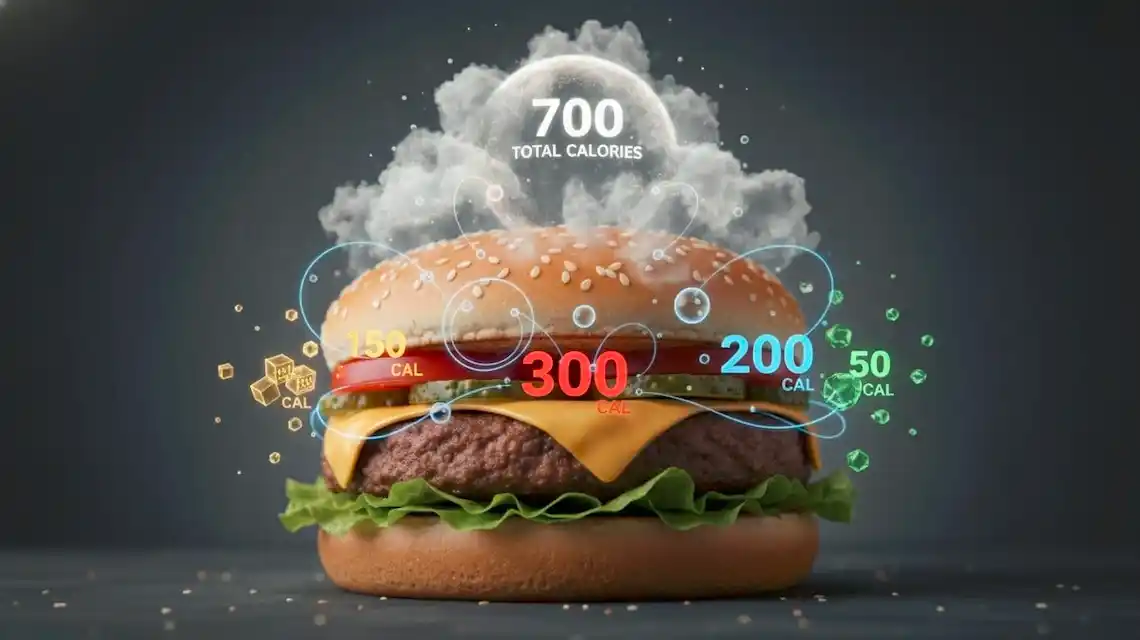
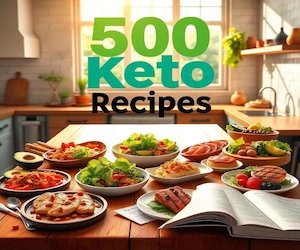
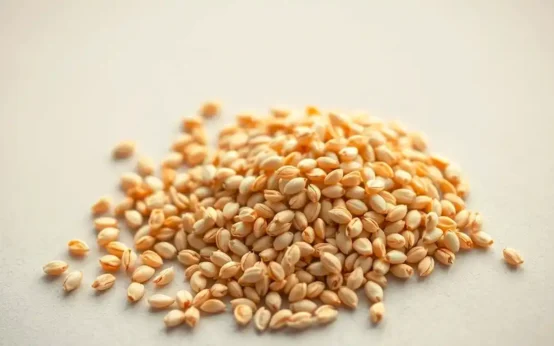 Health Benefit of Sesame Seed
Health Benefit of Sesame Seed 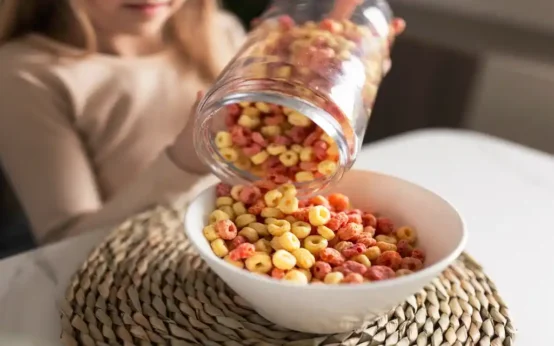 Healthiest Breakfast Cereal for Children
Healthiest Breakfast Cereal for Children 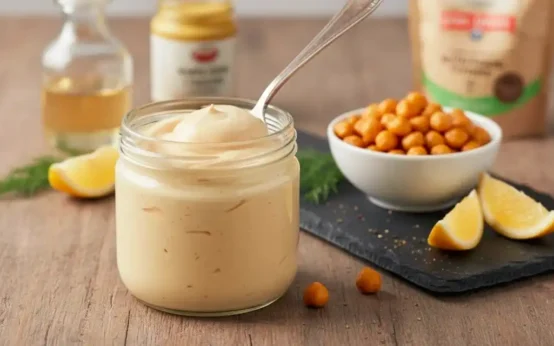 Vegan Oil Free Mayonnaise Recipe
Vegan Oil Free Mayonnaise Recipe  Nutrition to Enhance Athletic Performance
Nutrition to Enhance Athletic Performance 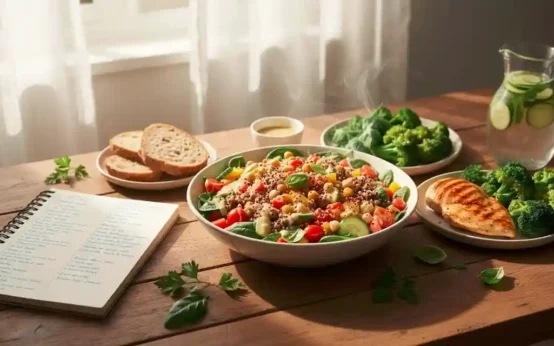 Tasty Healthy Low Cost Meals Recipes
Tasty Healthy Low Cost Meals Recipes 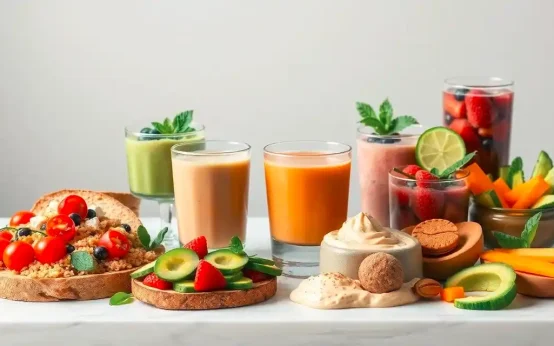 Gluten Free Food Options
Gluten Free Food Options